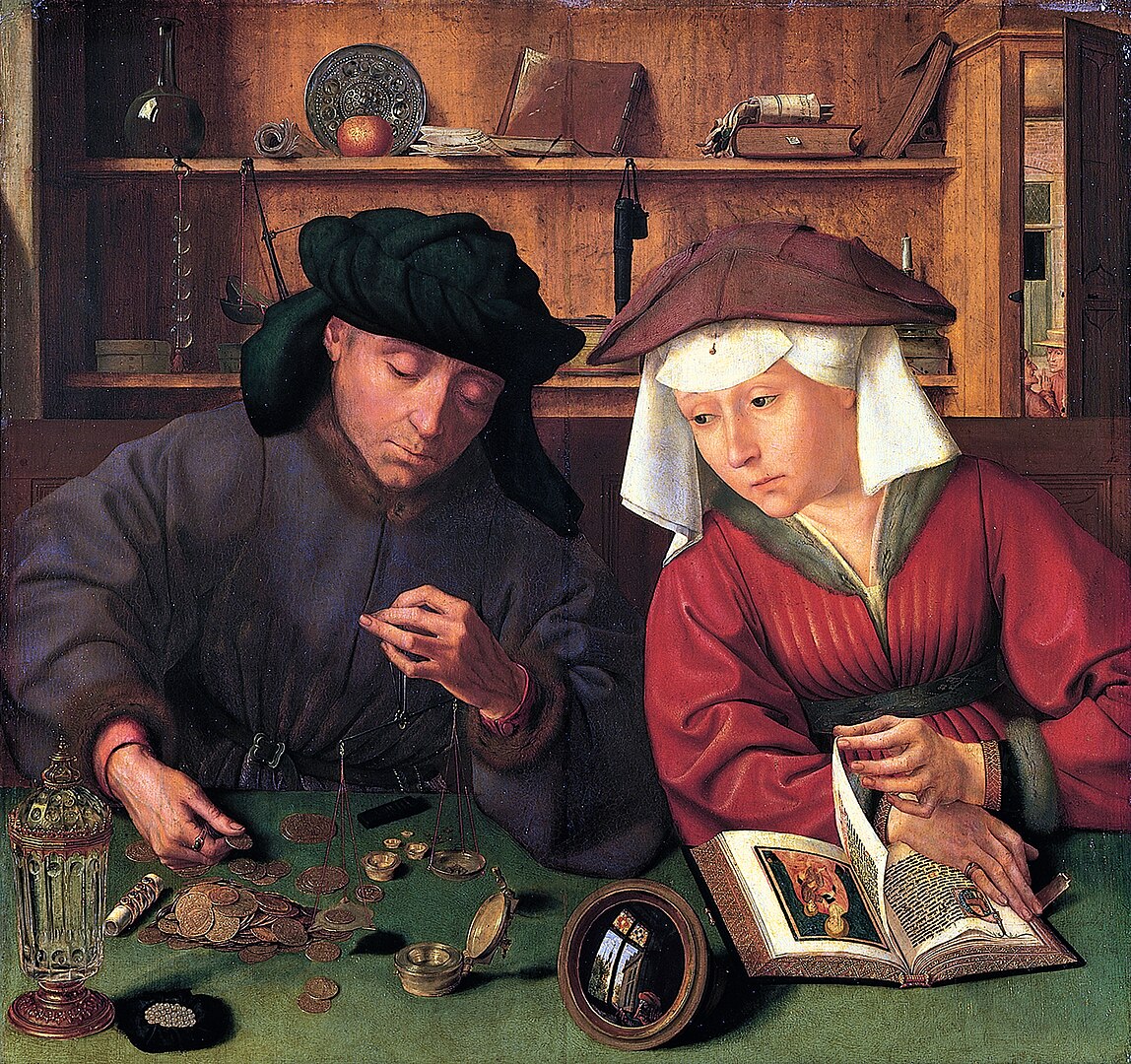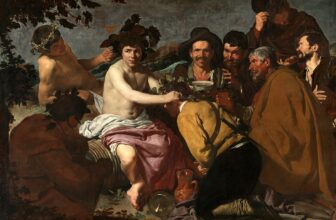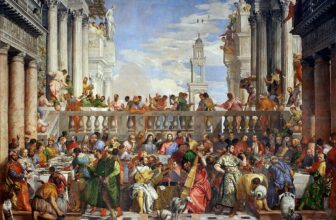
The Moneylender and His Wife: A Glimpse into 16th-Century Society
The world of art has long been a mirror reflecting the complexities of human life, offering a window into the moral and social intricacies of different periods. One such masterpiece, The Moneylender and His Wife, painted by Quentin Matsys in 1514, encapsulates the dual themes of material wealth and morality. This remarkable painting serves not only as an artistic triumph but also as a thought-provoking commentary on commerce, greed, and virtue.
Who Painted The Moneylender and His Wife?
Quentin Matsys, a renowned Flemish painter, is credited with creating The Moneylender and His Wife. Matsys was a master of the Northern Renaissance style, blending realism with moral and religious themes. Born in 1466 in what is now Belgium, Matsys initially worked as a blacksmith before transitioning into painting. His works often depict the tension between materialism and spirituality, a prevalent theme in 16th-century European society.
His oeuvre includes several genre paintings that depict daily life while subtly commenting on moral issues. Among them, The Moneylender and His Wife stands out for its detailed representation of wealth and its influence on human behavior. The painting is particularly significant because it represents both an artistic achievement and a moral lesson wrapped in the beauty of Flemish realism.
Symbolism: What Do the Moneylender and His Wife Represent?
The painting portrays a moneylender, dressed in fine robes, weighing coins with a keen, almost obsessive focus. Seated beside him is his wife, adorned in expensive clothing and a headdress, gazing at the coins with curiosity and contemplation. The objects surrounding them further enrich the narrative, as every detail in Matsys’ work is intentional and symbolic.
The Moneylender: The Allure and Burden of Wealth
The moneylender represents the burgeoning financial class in 16th-century Europe. As trade expanded and economies grew, moneylenders played a crucial role in commerce, offering loans and financial services. However, in Christian Europe, moneylending was often associated with greed and moral corruption, as usury (charging interest on loans) was frowned upon.
Matsys depicts the moneylender with an intense expression, emphasizing his preoccupation with wealth. His posture and the scales in his hands suggest a man deeply absorbed in the assessment of money, symbolizing how financial matters can consume a person’s entire being. The scales themselves, a common biblical motif, imply judgment, fairness, and the balance between material pursuits and moral obligations.
The Wife: The Pull Between Devotion and Materialism
The wife’s presence adds another layer of complexity to the painting’s narrative. While she holds a religious book, her gaze is fixed on the coins, hinting at a moral dilemma, should she focus on spiritual enlightenment or the material allure of wealth? This internal conflict mirrors the broader societal struggle between piety and prosperity during the Renaissance.
Women in 16th-century Flemish society were expected to uphold religious and domestic virtues. The wife’s distraction suggests how even the most devout individuals could be tempted by material wealth. Her finely detailed clothing signifies status, but her shifting focus underscores the pervasiveness of material desires.
Reflections and the Vanitas Motif
One of the most striking elements of The Moneylender and His Wife is the convex mirror positioned at the bottom of the composition. This mirror subtly reflects a figure standing near a window, possibly symbolizing an observer, or perhaps the viewer themselves. This technique, often used in vanitas paintings, serves as a reminder of life’s transient nature and the need for moral introspection.
Vanitas paintings typically included symbols of mortality, such as skulls, hourglasses, or decaying fruit, to highlight the fleeting nature of earthly pursuits. While Matsys’ painting does not include such direct symbols, the mirror functions as a gentle memento mori, urging viewers to reflect on their own values and priorities.
The Setting: A Scene of Prosperity and Reflection
The meticulous detailing of objects in the painting, coins, books, weights, and fine fabrics, illustrates the economic prosperity of the time while also serving as symbols of both temptation and responsibility. These objects reinforce the theme of material wealth as both a blessing and a potential moral hazard.
The warm, soft lighting adds a sense of realism, enhancing the painting’s intimate feel. The interior setting, with its orderly placement of items, suggests a comfortable yet constrained existence, where material possessions dictate the rhythms of life.
Where Is The Moneylender and His Wife Today?
Currently, The Moneylender and His Wife is housed in the Louvre Museum in Paris. As part of the museum’s extensive collection of Renaissance art, the painting continues to captivate viewers with its intricate details and profound symbolism.
The Louvre, renowned for its vast collection of masterpieces, provides the perfect backdrop for Matsys’ work. The painting is displayed among other significant works that depict the interplay between morality and materialism, allowing visitors to appreciate the broader cultural and artistic context of the Northern Renaissance.
Legacy and Influence
Matsys’ The Moneylender and His Wife remains a powerful piece that resonates with modern audiences. Its themes of wealth, ethics, and human nature are timeless, making the painting relevant even in contemporary society. The tension between material gain and moral responsibility is as pressing today as it was in the 16th century, making the artwork a subject of continuous scholarly discussion and admiration.
Moreover, Matsys’ realistic approach and attention to detail influenced generations of artists, especially those in the Dutch Golden Age, who further explored themes of commerce, daily life, and morality in their works. Painters like Jan Steen, Pieter de Hooch, and Johannes Vermeer carried forward the tradition of embedding moral narratives within their genre paintings.
Quentin Matsys’ The Moneylender and His Wife is more than just a painting; it is a masterful exploration of human nature and society’s evolving relationship with wealth. Through his use of symbolism, realism, and composition, Matsys crafts a narrative that continues to engage viewers, prompting them to reflect on their own values and the choices they make in the pursuit of prosperity.
Whether viewed as a critique of greed, a celebration of commerce, or a meditation on morality, this painting holds a unique place in art history. As it rests within the halls of the Louvre, it invites all who gaze upon it to ponder the eternal question: where should one draw the line between material wealth and spiritual well-being?




